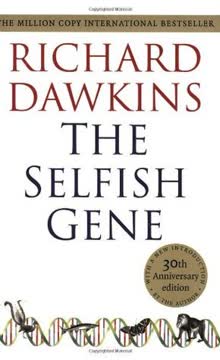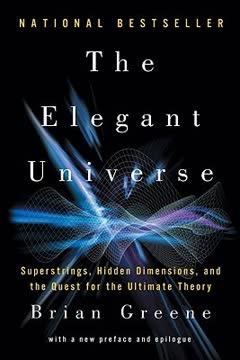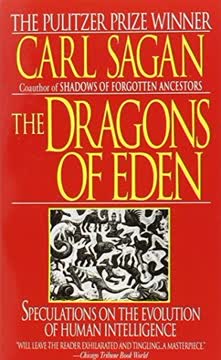Key Takeaways
1. The Pale Blue Dot: Our Tiny Place in the Cosmos
Our planet is a lonely speck in the great enveloping cosmic dark.
A distant perspective. From billions of miles away, the Voyager 1 spacecraft turned its camera back towards Earth, capturing an image where our world appeared as a single, pale blue pixel suspended in a sunbeam. This iconic photograph starkly illustrates our planet's physical insignificance in the vastness of the cosmos.
Challenging human importance. The image serves as a powerful reminder of the folly of human conceits, such as nationalism, imagined self-importance, and the delusion of a privileged position in the Universe. From this distance, the aggregate of all human history, joy, suffering, religions, and conflicts occurred on this tiny mote of dust.
A call for responsibility. The Pale Blue Dot underscores our shared vulnerability and the urgent need to deal more kindly with one another and to preserve our fragile home. It highlights that, for now, Earth is the only world known to harbor life, and there is nowhere else for our species to migrate.
2. Science Humiliates Human Conceit: The Great Deprovincializations
Modern science has been a voyage into the unknown, with a lesson in humility waiting at every stop.
Challenging centrality. Throughout history, humans have placed themselves at the center of the Universe, believing the cosmos was created for them. Science has systematically dismantled this anthropocentric view through a series of "Great Demotions."
A history of displacement:
- Earth is not the center of the Universe (Copernicus, Galileo).
- The Sun is not the center of the Galaxy (19th century astronomy).
- Our Galaxy is not the only one, nor is it at the center of the Universe (Hubble, expansion of the Universe).
- Our Solar System is likely not unique in having planets (pulsar planets, protoplanetary disks).
- Humans are latecomers in cosmic time, appearing only in the last instant.
- Humans are not fundamentally separate from other animals (Darwin, molecular biology).
Resisting humility. Each scientific discovery that displaced humanity from a central position was met with resistance, often from religious or philosophical authorities who saw it as a threat to established beliefs and social order. However, evidence-based inquiry ultimately prevailed, revealing a universe far grander and more indifferent than previously imagined.
3. A Universe Not Made for Us: Indifference, Not Design
Dismay that the Universe does not conform to our preferences seems childish.
Beyond human preference. Science reveals a universe governed by natural laws, not tailored to human desires or beliefs. The apparent order and elegance in the cosmos arise from these fundamental laws, not necessarily from a designer with human interests in mind.
Critiquing anthropocentrism. The Anthropic Principle, which notes that the universe's constants are fine-tuned for life, is critiqued for its narrow focus on our kind of life and its tendency to resurrect the old conceit that the universe was made for us. Other laws and constants might support different forms of life, and our understanding of what is "possible" is limited.
Facing reality. The scientific worldview, while sometimes perceived as cold or remote, offers an understanding of our actual circumstances, free from comforting fables. Embracing the hard truth of our non-centrality and the universe's indifference is a step towards maturity, contrasting with the narcissism of pre-Copernican notions.
4. Exploring Other Worlds Reveals Our Own: Comparative Planetology
By contrast, when we explore other worlds, what once seemed the only way a planet could be turns out to be somewhere in the middle range of a vast spectrum of possibilities.
A broader perspective. Studying other planets provides essential context for understanding Earth. By examining worlds with different conditions – too hot, too cold, too thin atmosphere, too thick atmosphere – we learn what happens when planetary processes vary.
Lessons for Earth:
- Venus's runaway greenhouse effect highlights the dangers of increasing atmospheric CO2.
- Mars's thin atmosphere and lack of ozone demonstrate the consequences of losing atmospheric protection.
- Martian dust storms and volcanic aerosols on Earth (like Pinatubo) inform climate modeling and the study of nuclear winter.
- The diverse geology of other worlds (volcanism on Io, Venus, Mars; icy moons) expands our understanding of planetary formation and processes beyond Earth's limited examples.
Practical utility. Comparative planetology, initially driven by curiosity about other worlds, has yielded profound practical benefits for understanding and addressing global environmental challenges like ozone depletion, climate change, and the effects of atmospheric particulates. It provides a crucial training ground for Earth scientists.
5. Robot Explorers Unveil Cosmic Wonders
Seeking not to control, threaten, wound, or destroy, these elegant machines represent the exploratory part of our nature set free to roam the Solar System and beyond.
Trailblazing missions. Robot spacecraft like the Voyagers have revolutionized our understanding of the Solar System, providing the first close-up views of dozens of worlds previously known only as points of light or fuzzy disks. These missions are triumphs of human engineering and scientific vision.
Voyager's legacy:
- Explored Jupiter, Saturn, Uranus, and Neptune, and their moons and rings.
- Discovered active volcanism on Io, thousands of rings at Saturn, bizarre moons like Miranda and Triton.
- Provided data on planetary atmospheres, magnetic fields, and compositions.
- Demonstrated remarkable longevity and adaptability through ingenious engineering solutions to in-flight problems.
Beyond human reach. Robots are essential for exploring environments too dangerous or distant for humans, such as the radiation belts of Jupiter or the frigid, dimly lit outer Solar System. They extend our senses and capabilities across vast cosmic distances, returning invaluable data that would otherwise be inaccessible.
6. Mars: A World of Ancient Water and Future Potential
TANTALIZING AND MAJESTIC, Mars is the world next door, the nearest planet on which an astronaut or cosmonaut could safely land.
A dynamic history. Mars, the most Earth-like planet, reveals evidence of a dramatically different past, with ancient river valleys, lakes, and possibly oceans suggesting warmer, wetter conditions billions of years ago. This raises profound questions about climate change and the potential for past life.
Scientific allure:
- Giant volcanoes (Olympus Mons) and vast rift valleys.
- Layered polar ice caps recording climate history.
- Evidence of recent liquid water from SNC meteorites.
- The mystery of why Mars became cold and arid while Earth remained clement.
Search for life. While Viking's life detection experiments were inconclusive, the possibility of past or even present microbial life, perhaps in subsurface water, remains a driving force for exploration. Mars is a prime target for future robotic and potentially human missions to search for biosignatures.
7. Routine Interplanetary Violence: The Impact Hazard
Their eventual choice, as ours, is spaceflight or extinction.
Cosmic collisions. The Solar System is not a perfectly ordered clockwork; it is a dynamic environment where collisions between worlds are a natural process. Evidence from cratered surfaces and events like Comet Shoemaker-Levy 9 impacting Jupiter demonstrates that significant impacts still occur.
Threat to Earth:
- Near-Earth asteroids and comets pose a risk of future collisions.
- Large impacts (kilometers across) can cause global catastrophes, including mass extinctions.
- Smaller impacts (hundreds of meters) can cause regional devastation and climatic effects.
A shared danger. The impact hazard is a threat to all life on Earth, transcending national borders and political differences. It serves as a powerful, non-discriminatory reminder of our shared vulnerability on this planet.
8. Spaceflight or Extinction: A Survival Imperative
The existence of interplanetary collision hazards, when widely understood, works to bring our species together.
Beyond Earth for safety. The threat of catastrophic impacts, along with other potential global disasters (self-inflicted or natural), presents a compelling long-term argument for humanity to become a multi-world species. Establishing self-sufficient communities off-Earth provides insurance against extinction.
Mitigation and diversification:
- Developing the technology to detect and potentially deflect threatening asteroids or comets.
- Creating independent human settlements on other worlds to ensure survival if Earth becomes uninhabitable.
A unifying force. Facing the common danger of cosmic impacts can motivate international cooperation in space exploration and defense. It highlights the need for effective transnational institutions capable of addressing threats on a planetary scale.
9. Remaking the Planets: The Dream of Terraforming
The notion of our descendants living and working on other worlds, and even moving some of them around for their convenience, seems the most extravagant science fiction.
Engineering worlds. The concept of terraforming involves altering the environments of other planets or asteroids to make them habitable for humans, potentially without the need for elaborate life support. This represents the ultimate expression of human technological ambition in space.
Challenges and possibilities:
- Terraforming Venus is extremely difficult due to its massive atmosphere and heat.
- Terraforming Mars is more feasible, potentially involving creating a greenhouse effect and releasing trapped water.
- Asteroids and icy moons might be reconfigured into habitats, perhaps underground or within domes.
Ethical considerations. Terraforming raises profound questions about humanity's right to alter other worlds, especially if they harbor even microbial life, and the responsibility to preserve unique planetary environments for future generations and scientific study.
10. Listening in the Dark: The Search for Extraterrestrial Intelligence
Conceivably it might also be the last generation before contact is made—and this the last moment before we discover that someone in the darkness is calling out to us.
Interrogating the cosmos. The Search for Extraterrestrial Intelligence (SETI) uses radio telescopes to listen for signals from potential alien civilizations orbiting other stars. This quest represents humanity's first systematic attempt to determine if we are alone in the universe.
The rationale:
- Radio is a powerful and relatively inexpensive means of interstellar communication.
- The laws of physics and astronomy are universal, providing a common language for science-capable civilizations.
- "Magic frequencies" like the hydrogen line (1420 MHz) are logical places to listen.
Intriguing hints. Early SETI projects like Project META have detected enigmatic, non-repeating signals correlated with the galactic plane, hinting at potential distant sources, though definitive proof remains elusive. The search continues with more advanced technology, often driven by private initiatives.
11. Our Time is Extraordinary: Peril and Opportunity
Our leverage on the future is high just now.
A unique epoch. The present moment in human history is unprecedented because, for the first time, our technology has simultaneously created the means for self-destruction and the capability to escape Earth and settle other worlds. This coincidence makes our era statistically extraordinary.
Converging capabilities:
- Development of weapons of mass destruction and environmental alteration technologies.
- Development of spaceflight capabilities for interplanetary travel and settlement.
A critical juncture. This period of heightened peril and opportunity means that the choices we make now have disproportionate consequences for the long-term survival and future trajectory of our species. We are at a critical evolutionary bottleneck.
12. The Call to Wander: Humanity's Destiny Beyond Earth
Planetary exploration satisfies our inclination for great enterprises and wanderings and quests that has been with us since our days as hunters and gatherers on the East African savannahs a million years ago.
An innate drive. Humans have a deep-seated urge to explore and wander, a trait honed over millions of years as nomadic hunter-gatherers. Space exploration taps into this fundamental aspect of our nature, offering new frontiers for adventure and discovery.
Beyond practicalities. While scientific, economic, and survival arguments exist for spaceflight, the emotional and psychological appeal of venturing into the cosmos is also a powerful motivator. It inspires hope, fosters a cosmic perspective, and elevates the human spirit.
A path forward. Despite challenges and setbacks, the long-term trajectory for humanity, if we survive our current period of peril, involves expanding beyond Earth. This journey, driven by curiosity, necessity, and the ancient call to wander, represents the next chapter in the story of our species.
Last updated:
FAQ
What’s Pale Blue Dot: A Vision of the Human Future in Space by Carl Sagan about?
- Humanity’s Place in the Cosmos: The book explores humanity’s position in the universe, emphasizing the fragility and uniqueness of Earth as seen from space.
- Vision for Space Exploration: Sagan presents a vision for the future of human and robotic space exploration, discussing missions to Mars, the Moon, asteroids, and beyond.
- Scientific and Philosophical Reflections: The narrative blends scientific discoveries with philosophical insights, challenging anthropocentric views and encouraging a cosmic perspective.
- Environmental and Existential Themes: Sagan connects planetary science to urgent environmental issues on Earth, advocating for stewardship and international cooperation.
Why should I read Pale Blue Dot by Carl Sagan?
- Profound Cosmic Perspective: The book offers a humbling and awe-inspiring view of Earth’s place in the universe, fostering appreciation for our planet’s fragility.
- Insight into Space Science: Readers gain a comprehensive understanding of the history, achievements, and future possibilities of space exploration.
- Environmental Awareness: Sagan links planetary science to pressing environmental threats like ozone depletion and global warming, showing their interconnectedness.
- Inspirational and Thought-Provoking: The eloquent writing inspires reflection on humanity’s destiny, the importance of science, and our responsibilities as cosmic citizens.
What are the key takeaways from Pale Blue Dot by Carl Sagan?
- Earth’s Unity and Vulnerability: Viewing Earth from space dissolves divisions and highlights the need for global cooperation to address environmental challenges.
- Comparative Planetology: Studying other planets provides crucial insights into Earth’s climate and environmental risks, such as greenhouse effects and nuclear winter.
- Space Exploration’s Value: Beyond scientific discovery, spaceflight inspires humanity, fosters international collaboration, and may be essential for long-term survival.
- Humility in the Cosmos: Sagan urges readers to embrace humility, recognizing that humans are not the center of the universe but part of a vast, interconnected cosmos.
What are the best quotes from Pale Blue Dot by Carl Sagan and what do they mean?
- “A mote of dust suspended in a sunbeam”: This iconic phrase describes Earth’s appearance from the Voyager 1 photograph, underscoring our planet’s smallness and vulnerability.
- “Our responsibility to deal more kindly with one another, and to preserve and cherish the pale blue dot, the only home we’ve ever known.” Sagan calls for compassion and stewardship, emphasizing the unity of all life on Earth.
- “The universe is not required to be in perfect harmony with human ambition.” This quote challenges anthropocentrism, reminding us that the cosmos is indifferent to human desires.
- “We are, each of us, a multitude.” Sagan reflects on the complexity and interconnectedness of life, both within ourselves and across the planet.
How does Carl Sagan’s Pale Blue Dot explain the significance of the Voyager 1 “Pale Blue Dot” photograph?
- Perspective on Earth’s Size: The photograph, taken from 3.7 billion miles away, shows Earth as a tiny, pale blue dot, highlighting our planet’s insignificance in the vast cosmos.
- Unity and Fragility: Sagan uses the image to emphasize that everyone who has ever lived exists on this “lonely pixel,” reinforcing the interconnectedness of humanity.
- Call for Responsibility: The photograph serves as a powerful reminder of our duty to care for and protect our only home.
- Humbling Effect: The image challenges human pride and encourages a more modest, global perspective.
What achievements in space exploration are highlighted in Pale Blue Dot by Carl Sagan?
- United States Milestones: The book covers key achievements such as the discovery of the Van Allen radiation belt, the Apollo Moon landings, and robotic missions to the outer planets.
- Soviet Union/Russia Contributions: Sagan details milestones like Sputnik 1, the first human in space, and pioneering robotic landings on the Moon, Venus, and Mars.
- Voyager Missions: The Voyager 1 and 2 spacecraft are celebrated for their groundbreaking exploration of the Solar System and for capturing the “Pale Blue Dot” image.
- Robotic Exploration’s Role: The narrative emphasizes the cost-effectiveness and scientific value of robotic missions in expanding humanity’s reach.
How does Pale Blue Dot by Carl Sagan address the search for life on Earth and beyond?
- Detecting Life from Afar: Sagan imagines how an alien spacecraft could detect life on Earth by observing atmospheric gases and radio signals.
- Galileo Spacecraft Experiment: The book describes how the Galileo flyby confirmed that signs of life and intelligence are detectable remotely, validating methods for searching for life elsewhere.
- Current Knowledge: Despite extensive exploration, no life has been found beyond Earth, but the search continues with advancing technology.
- SETI and Extraterrestrial Intelligence: Sagan discusses the scientific efforts to detect signals from alien civilizations and the philosophical implications of such a search.
What is the “Anthropic Principle” and how does Pale Blue Dot by Carl Sagan critique it?
- Weak Anthropic Principle: The book explains that the laws of nature must allow for our existence, but this is a tautology rather than a profound insight.
- Strong Anthropic Principle Critique: Sagan criticizes the idea that the universe was designed for humans, calling it untestable and anthropocentric.
- Principle of Mediocrity: He advocates for humility, suggesting that humans are not privileged but are part of a vast, indifferent cosmos.
- Scientific Demotions: The narrative highlights how science has repeatedly displaced humanity from the center of the universe.
How does Pale Blue Dot by Carl Sagan connect planetary science to environmental issues like ozone depletion and global warming?
- Ozone Depletion and CFCs: Sagan explains how research on Venus’s atmosphere helped scientists understand the threat of CFCs to Earth’s ozone layer.
- Global Warming Models: Climate models developed for Mars and Venus have been used to predict and understand Earth’s greenhouse effect.
- Nuclear Winter: The book discusses how planetary science methods were applied to model the catastrophic effects of nuclear war on Earth’s climate.
- Interconnected Science: Sagan demonstrates that studying other planets can yield vital insights into protecting our own environment.
What does Pale Blue Dot by Carl Sagan say about Mars and its significance for human exploration?
- Mars as Earth’s Neighbor: Mars is portrayed as the most Earthlike planet, with evidence of ancient rivers and lakes, making it a prime candidate for exploration and possible settlement.
- Robotic Discoveries: Missions like Mariner 9 and Viking have revealed Mars’ geology, climate history, and surface conditions, paving the way for future exploration.
- Challenges and Resources: The thin atmosphere, cold temperatures, and radiation present obstacles, but resources like water ice offer opportunities for in-situ utilization.
- International Cooperation: Sagan advocates for collaborative human missions to Mars, emphasizing their symbolic and practical importance.
What are the arguments for and against human missions to Mars in Pale Blue Dot by Carl Sagan?
- Arguments For: Human missions could greatly expand knowledge, inspire future generations, and serve as a backup for humanity’s survival.
- Arguments Against: High costs, technological risks, and the effectiveness of robotic missions challenge the necessity of sending humans.
- Economic and Political Realities: Sagan discusses the need for compelling justifications and international partnerships to make such missions feasible.
- Balanced Approach: He recommends incremental research and technology development, supporting eventual human missions without premature commitment.
What is terraforming according to Pale Blue Dot by Carl Sagan, and is it feasible?
- Definition of Terraforming: Terraforming involves altering a planet’s environment to make it more Earthlike and habitable for humans.
- Feasibility and Challenges: Mars is considered the most feasible candidate, but the process would be enormously expensive and complex, requiring advances in technology.
- Ethical Considerations: Sagan raises questions about the right to alter other worlds and the need for thorough scientific understanding before proceeding.
- Long-Term Prospects: While current technology is insufficient, future advances may make terraforming possible over centuries or millennia.
Review Summary
Pale Blue Dot received high praise for its poetic and inspiring exploration of humanity's place in the universe. Readers appreciated Sagan's ability to balance scientific knowledge with philosophical insights, making complex concepts accessible. The book's discussion of space exploration, planetary science, and potential future scenarios captivated many. Some found later chapters repetitive, and a few criticized the atheistic tone. Overall, reviewers felt the book encouraged a broader perspective on Earth's significance and humanity's role in the cosmos, leaving a lasting impact on their worldview.
Similar Books










Download PDF
Download EPUB
.epub digital book format is ideal for reading ebooks on phones, tablets, and e-readers.







